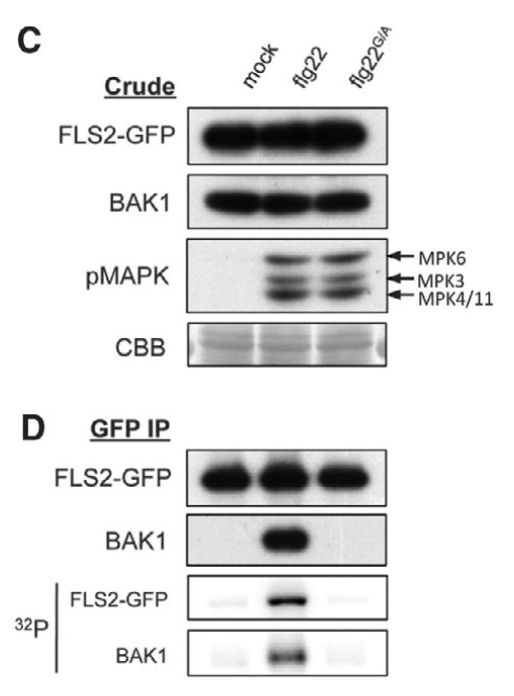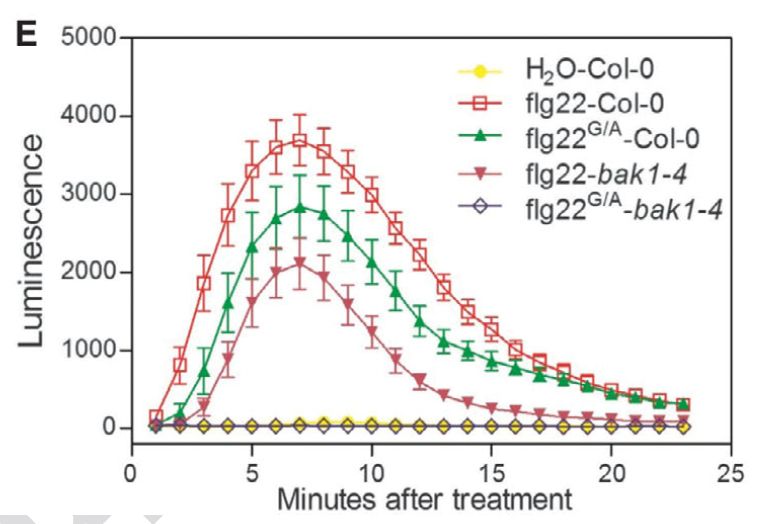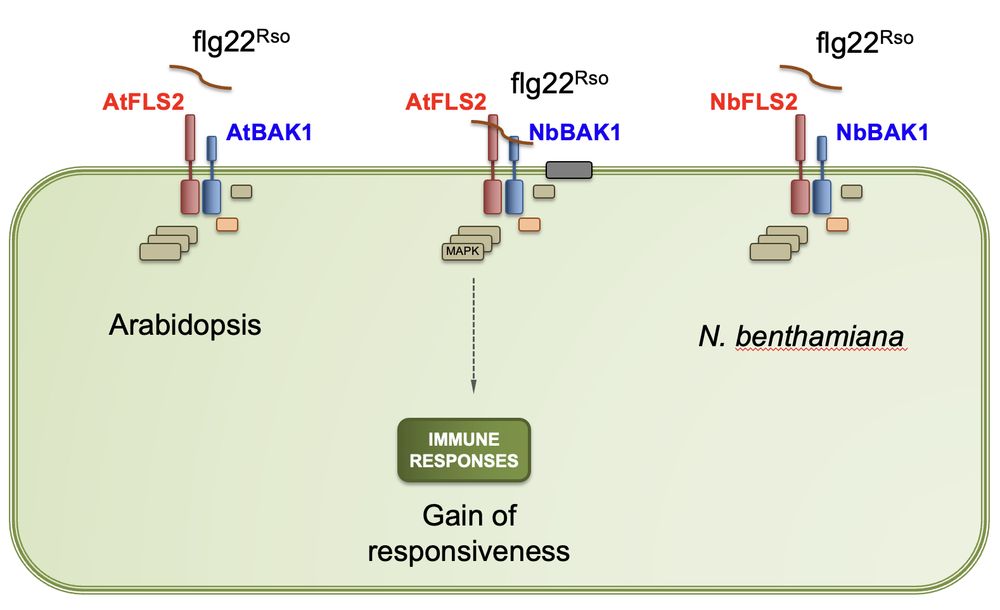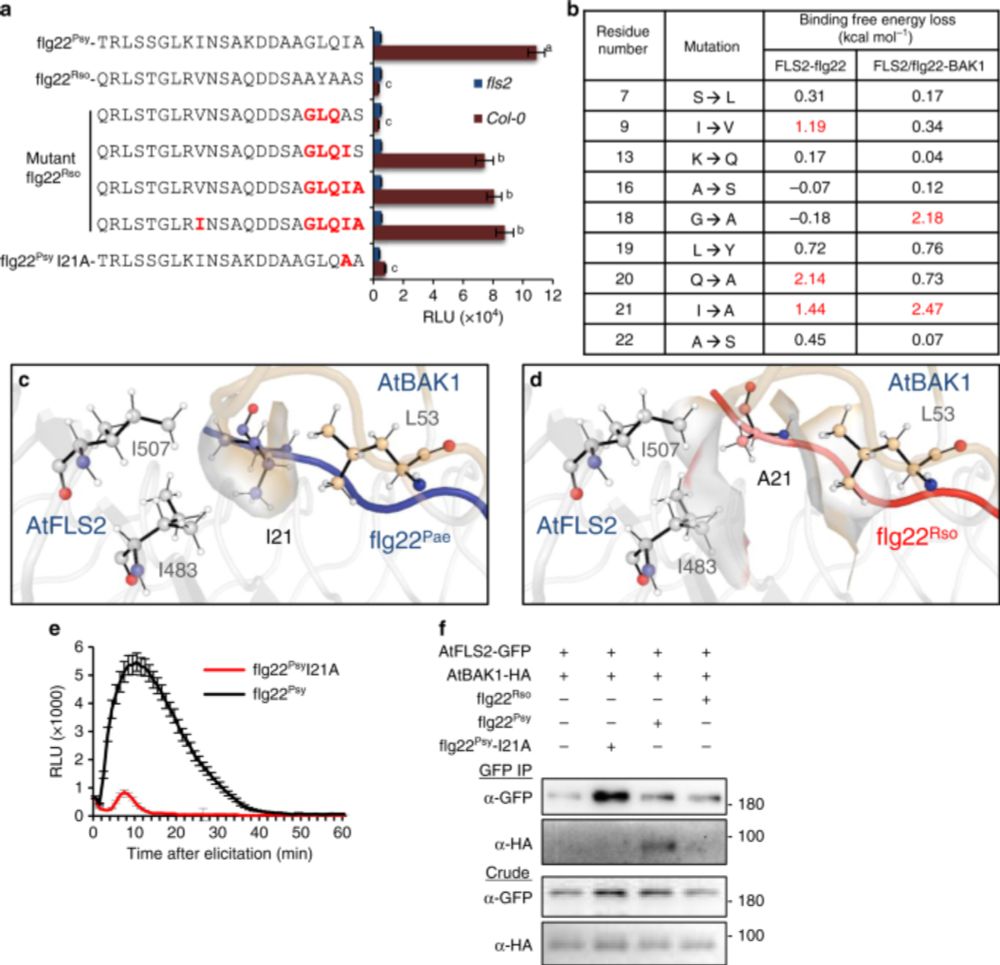Alberto Macho
@albertopmacho.bsky.social
Scientist studying Plant-Pathogen Interactions (Molecular Biology - Biochemistry - Genetics). Scuba diving. Hiking. Football. Photography
Together with our previous report earlier this year (Yu et al, PLoS Pathogens, 2025), this work suggests that hijacking plant kinases is an important strategy for bacterial effectors to promote their own phosphorylation and stability in plant cells
doi.org/10.1371/jour...
doi.org/10.1371/jour...

A bacterial type III effector hijacks plant ubiquitin proteases to evade degradation
Author summary Most bacterial plant pathogens inject effector proteins inside host cells to suppress immune responses and manipulate other plant functions in order to cause disease. Even though these ...
doi.org
September 2, 2025 at 9:53 AM
Together with our previous report earlier this year (Yu et al, PLoS Pathogens, 2025), this work suggests that hijacking plant kinases is an important strategy for bacterial effectors to promote their own phosphorylation and stability in plant cells
doi.org/10.1371/jour...
doi.org/10.1371/jour...
These phosphorylation sites seem to be important for RipBM contribution to virulence in tomato, reflecting an effector strategy to promote its own stability and contribute to bacterial virulence

September 2, 2025 at 9:53 AM
These phosphorylation sites seem to be important for RipBM contribution to virulence in tomato, reflecting an effector strategy to promote its own stability and contribute to bacterial virulence
However, RipBM is phosphorylated by SnRK-family proteins in plant cells and subsequently associates with plant 14-3-3 proteins, which prevent RipBM ubiquitination and degradation
September 2, 2025 at 9:53 AM
However, RipBM is phosphorylated by SnRK-family proteins in plant cells and subsequently associates with plant 14-3-3 proteins, which prevent RipBM ubiquitination and degradation
RipBM is an unconventional type-III effector from Ralstonia, in the sense that it encodes a kinase domain, although, in our experience, kinase activity is not detectable. Sustained RipBM expression in eukaryotic cells leads to cell death, which seems to be a toxic effect of RipBM activity
September 2, 2025 at 9:53 AM
RipBM is an unconventional type-III effector from Ralstonia, in the sense that it encodes a kinase domain, although, in our experience, kinase activity is not detectable. Sustained RipBM expression in eukaryotic cells leads to cell death, which seems to be a toxic effect of RipBM activity
My guess is it forms an “imperfect” complex that mediates a different type of recognition of flg22Rso and a subsequent activation that does engage all the usual downstream targets, but only some of them
July 31, 2025 at 9:48 AM
My guess is it forms an “imperfect” complex that mediates a different type of recognition of flg22Rso and a subsequent activation that does engage all the usual downstream targets, but only some of them
This reminds me the treatments with the flg22G/A mutant peptide we did in Sun et al, Science, 2013 (doi.org/10.1126/scie...). That mutation abolishes BAK1 interaction and activation, significantly reduces ROS, but does not affect MAPK activation


July 26, 2025 at 3:49 AM
This reminds me the treatments with the flg22G/A mutant peptide we did in Sun et al, Science, 2013 (doi.org/10.1126/scie...). That mutation abolishes BAK1 interaction and activation, significantly reduces ROS, but does not affect MAPK activation
Hopefully, the information that heterologous PRR expression can confer novel PAMP recognition could provide new information for the design of synthetic immune receptors with expanded recognition of polymorphic pathogen elicitors
July 26, 2025 at 2:21 AM
Hopefully, the information that heterologous PRR expression can confer novel PAMP recognition could provide new information for the design of synthetic immune receptors with expanded recognition of polymorphic pathogen elicitors
Long story short, it seems that AtFLS2, when expressed in N. benthamiana, associates with NbSERKs and mediate a “partial” complex activation that leads to some downstream responses (MAPK, gene expression), but not others (ROS). Eventually, this enhances disease resistance

July 26, 2025 at 2:21 AM
Long story short, it seems that AtFLS2, when expressed in N. benthamiana, associates with NbSERKs and mediate a “partial” complex activation that leads to some downstream responses (MAPK, gene expression), but not others (ROS). Eventually, this enhances disease resistance
We did not see any gain of flg22Rso-triggered ROS burst, but…
there was MAPK activation. Surprisingly, what was supposed to be a “negative control”, even WT AtFLS2 expressed in N. benthamiana would confer MAPK activation upon flg22Rso treatment
there was MAPK activation. Surprisingly, what was supposed to be a “negative control”, even WT AtFLS2 expressed in N. benthamiana would confer MAPK activation upon flg22Rso treatment

July 26, 2025 at 2:21 AM
We did not see any gain of flg22Rso-triggered ROS burst, but…
there was MAPK activation. Surprisingly, what was supposed to be a “negative control”, even WT AtFLS2 expressed in N. benthamiana would confer MAPK activation upon flg22Rso treatment
there was MAPK activation. Surprisingly, what was supposed to be a “negative control”, even WT AtFLS2 expressed in N. benthamiana would confer MAPK activation upon flg22Rso treatment
Before, we identified 2 residues in soybean FLS2 that contribute to the gain of recognition of the polymorphic Ralstonia flg22 (see attached paper)
doi.org/10.1038/s414...
Then we tried to see if mutating the equivalent residues in Arabidopsis FLS2 would confer recognition
doi.org/10.1038/s414...
Then we tried to see if mutating the equivalent residues in Arabidopsis FLS2 would confer recognition

An immune receptor complex evolved in soybean to perceive a polymorphic bacterial flagellin - Nature Communications
Ralstonia solanacearum evades plant immunity by producing an atypical flagellin protein, thus causing bacterial wilt disease. Here, Wei et al. show that soybean has evolved a divergent flagellin recep...
doi.org
July 26, 2025 at 2:21 AM
Before, we identified 2 residues in soybean FLS2 that contribute to the gain of recognition of the polymorphic Ralstonia flg22 (see attached paper)
doi.org/10.1038/s414...
Then we tried to see if mutating the equivalent residues in Arabidopsis FLS2 would confer recognition
doi.org/10.1038/s414...
Then we tried to see if mutating the equivalent residues in Arabidopsis FLS2 would confer recognition

